Transfer from Linux Mail Server to Exchange Server 2007 (Part 3)
 Transfer from Linux Mail Server to Exchange Server 2007 (Part 1)
Transfer from Linux Mail Server to Exchange Server 2007 (Part 1)
 Transfer from Linux Mail Server to Exchange Server 2007 (Part 2)
Transfer from Linux Mail Server to Exchange Server 2007 (Part 2)
Anderson Patricio
Update user information in Active Directory
Now that we have created the user, we will switch to the user information section. Using the New-Mailbox command cannot add the information we have in the CSV file. So use the same Exchange Management Shell session and run another command to add the information side in the $ Passwdfile variable of the newly created user. The following command can be used (Figure 1):
$ FilePasswd | ForEach {Set-User $ _. Username –Office $ _. Office –Phone $ _. OfficePhone –HomePhone $ _. HomePhone}

Figure 1: Add more information from $ Passwdfile to current AD accounts
The results seen in the User's Properties are shown in Figures 2 and 3 below.

Figure 2: The user has received information from the $ PasswdFile variable

Figure 3: User and phone number created in the Linux box
Using the same concept, we can create additional columns in the passwd.csv file to add more information in the new user account. For example, we can create a column called MobilePhone in the CSV file, add more information to all users and add –MobilePhone $ _. MobilePhone in the set-user command. Using this logic we can add the desired information in the new environment via the original CSV file.
Group the workstations in the Active Directory domain
To switch to a new environment, we must first work on workstations. Then note the following points before starting the process:
• Make sure that all workstations use Active Directory DNS Server in DNS settings.
• All workstations use the correct DNS suffix (Active Directory suffix)
• Declare users after connecting their workstations in Active Directory, must log on to the domain with the current user name information used to access the pre-set mail and password system.
• Download the Windows 2003 Resource Kit and allow copying to all workstations as needed.
• It is possible to perform this process slowly rather than working on all clients at the same time.
We have just introduced some initial settings. All workstations need to be resolved through the Active Directory DNS Server and can access DNS resolution from an old zone (apatricio.ca) without problems. At this point, we can start migrating clients from the workgroup to Active Directory.
1. Enter the workstations into Active Directory
2. Additional information can be found in this article.
3. Log in locally as Administrator .
4. Copy moveuser.exe to c:
5. Configure the internal profile to be used with new Active Directory accounts (Figure 4). Run the following command:
Move
Local user is the internal user name they are using.

Figure 4: Switching the internal user profile to be used in the new Active Directory account
5. Log out with the computer as an administrator.
6. Users can login using their original username and password that we set up during the process of creating mailboxes via Powershell.
7. After logging in, the user will receive a message asking to change the password. Remind them to use the same password they are using to access Linux to receive mail.
8. Users need to access the same information they had before we moved the profile using moveuser.exe tool. Here the user experience will be similar; It includes desktop icons, Outlook Express, and so on, as shown in Figure 5.
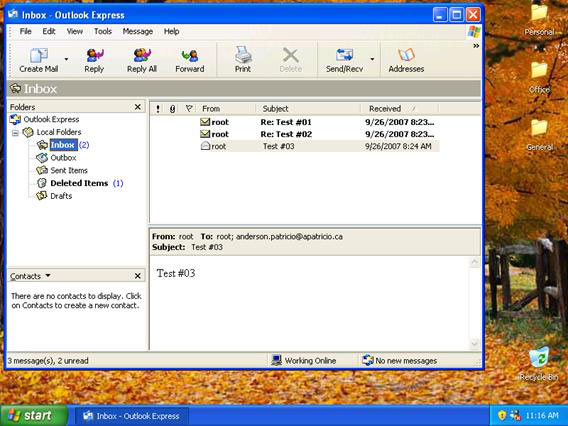
Figure 5: Users who are logged in to the domain will be able to access the information they have used internally
Transformation - current status (Update # 02)
Now our workstations have started to be migrated to a new domain, all users are using Active Directory accounts to log in to the domain. Our users have enabled mailboxes, although they are still accessing the Linux Box. The picture of the working environment can be seen in the picture below:
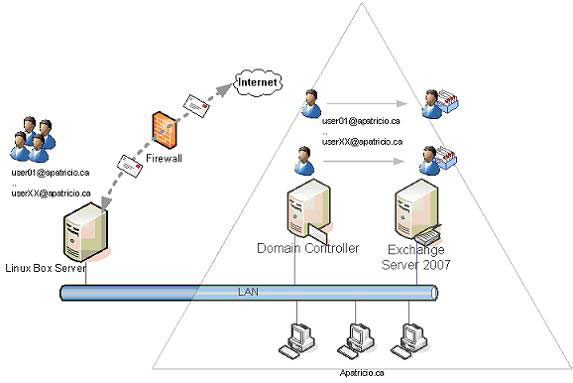
Figure 6: Current state of the script
The next steps will enable Exchange Server 2007 to accept the current client settings before switching to Windows Server 2007, to do so we must set up some components of Windows Server 2007 such as:
- POP3
- Receive Connector
- OWA
Configure POP3 settings in Windows Server 2007
Install Outlook 2007 on all workstations but until now existing clients using Outlook Express still work fine. We will adjust them to Windows Server 2007 using the current settings. To do that we need to enable POP3 in Exchange Server 2007:
1. Open the Exchange Management Console.
2. Go to Client Access section.
3. In the working pane, click Exchange Server 2007 , in the results pane, click POP3 and IMAP4 tab
4. Click POP3 and in Toolbox Actions click Properties under POP3.
5. Click the Authentication tab.
6. Select Plain text login ( Basic Authentication ) as shown in Figure 7.
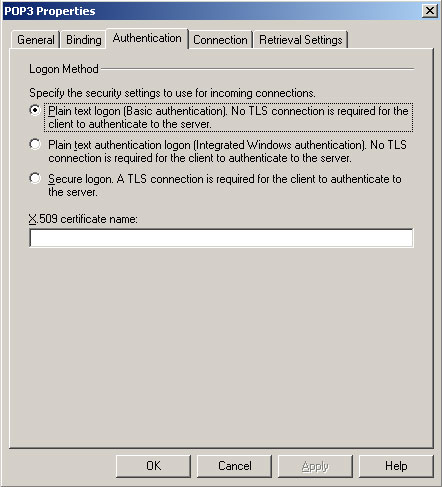
Figure 7: POP3 authentication configuration
7. Click OK
8. Open services.msc and configure POP3 Service to start automatically and click Start .
Get a workstation to validate the new POP3 Settings. Configure this workstation with a test user in the current environment (Linux box) and then change Outlook Express settings to use the Exchange Server IP address. Set up to test users who can download messages via POP3 protocol. We can send some test messages to the user mailbox using Exchange 2007 OWA because the new Exchange 2007 mailbox of the new user is empty.
Configure Receive Connector for internal users
To allow internal users to send mail through SMTP, we can create a Receive Connector to allow all internal clients to send messages through it. This will be a temporary configuration. After installing Outlook 2007 on clients they will use MAPI and this connector may be removed.
1. Open the Exchange Management Console .
2. Open Server Configuration .
3. Click Hub Transport .
4. In Toolbox Actions, click New SMTP Receive Connector .
5. In the Introduction section, label the new receive connector and select Custom . Click Next .
6. In the Local Network Setting section, type the FQDN name to be used for this Receive Connector . Click Next .
7. In Remote Network settings, we must add the internal network and click Next .
8. In the New Connector, a listing will be displayed, click New . (Figure 8)
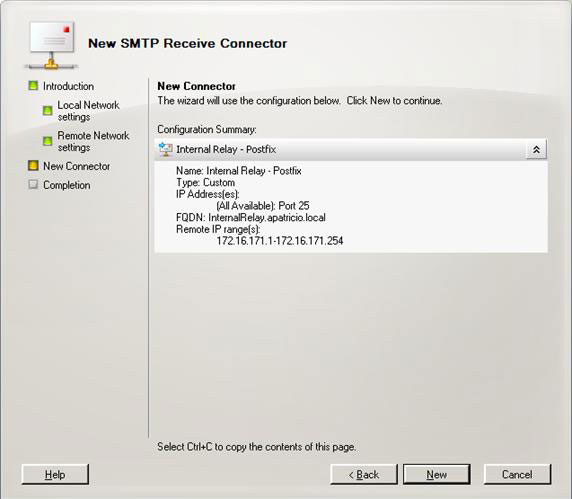
Figure 8: End of a new receiver that all internal clients will use
If your current environment allows internal users to send messages through the Linux box, we must enable Anonymous users in the new Receive Connector. To do that, check Anonymous users on the Permissions Groups tab (Figure 9).
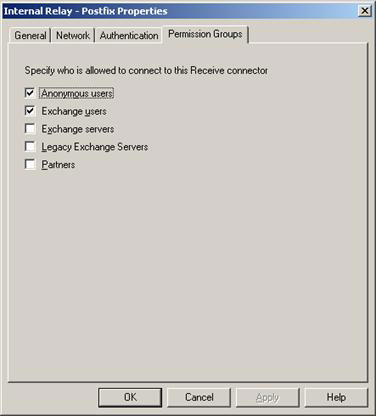
Figure 9: Allow asynchronous users (Anonymous users) to send messages through the receive connector inside.
The last setting to perform in the new Receive Connector is to allow the internal clients to send Internet messages via the new connector (Figure 10). By default, Windows Server 2007 will allow only internal domain forwarding. Internal users cannot send messages inside, to change this behavior we need to run the following command:
Get-ReceiveConnector * Internal * | Add-ADPermission –user 'NT AUTHORITYANONYMOUS LOGON' –ExtendendRights ms-Exch-SMTP-Accept-Any-Recipient
Note :
The name of the Receive connector is ' Internal Receive Connector '.

Figure 10: Adding ms-Exch-SMTP-Accept-Any-Recipient to Anonymous users
in the Receive Connector inside.
Now the part that validates the Receive Connector! Here are some tests to validate whether our internal client works well in a new environment:
- Telnet 25
The FQDN next to 220 must be the name set during the Receive Connector, otherwise make sure the IP address range in the remote network settings contains the IP address of the host where we are performing the test. - Configure a computer with the Windows Server 2007 IP address in the SMTP configuration and send mail to recipients inside and outside the Internet. The process needs to work well.
If everything goes well, all users can send messages inside and outside. If you have other settings for sending mail like SMTP Authenticated or TLS, change Exchange Server 2007 so that it works exactly for your needs before changing the environment.
Conclude
In this article, I have shown you how to update user properties and configure some Windows Server 2007 components to work with the current environment. In the next part of this series, we will introduce the final steps in moving between messaging systems and installing Microsoft Outlook on workstations to convert user data from internal to base. Exchange data.
You should read it
- USER_NAME function in SQL Server
- The CREATE USER command in SQL Server
- DROP USER command in SQL Server
- SYSTEM_USER function in SQL Server
- Function SESSION_USER in SQL Server
- Add or remove user accounts for Windows Home Server 2011
- How to Configure Users and Groups in OS X Mavericks Server App 3.X
- How to decentralize users in MS SQL Server
May be interested
- Transfer Exchange 2003 to Exchange 2007 (Part 3)
 in the previous two sections, we installed the first exchange 2007 servers, combining hub transport and client access servers in an exchange 2003 environment.
in the previous two sections, we installed the first exchange 2007 servers, combining hub transport and client access servers in an exchange 2003 environment. - Transfer Exchange 2003 to Exchange 2007 (Part 1)
 in this series, we will learn how to migrate data from exchange server 2003 system to exchange server 2007 system.
in this series, we will learn how to migrate data from exchange server 2003 system to exchange server 2007 system. - Use remote connection analysis tool for Exchange Server - Part 1
 in this article we will introduce you to the exchange server remote connectivity analyzer (exrca) tool so that administrators can validate autodiscover, ....
in this article we will introduce you to the exchange server remote connectivity analyzer (exrca) tool so that administrators can validate autodiscover, .... - Enterprise e-mail management with Exchange Server 2010
 exchange server is a server software developed by microsoft that specializes in e-mail solutions and information exchange within businesses.
exchange server is a server software developed by microsoft that specializes in e-mail solutions and information exchange within businesses. - Managing log files of Exchange Server 2007 - Part 2
 in this article, i will show you some other ways to get log information in exchange server 2007.
in this article, i will show you some other ways to get log information in exchange server 2007. - Check mail in Exchange 2007
 have you used any version of exchange yet and do you know its mail-checking feature. when enabled, the message checker component creates log files to record the details of mail activity occurring within the exchange infrastructure.
have you used any version of exchange yet and do you know its mail-checking feature. when enabled, the message checker component creates log files to record the details of mail activity occurring within the exchange infrastructure. - Discover EMC in Exchange Server 2010 (Part 2)
 in the previous article, we learned some new features in exchange server 2010, including: high availability, archiving, federation and sharing.
in the previous article, we learned some new features in exchange server 2010, including: high availability, archiving, federation and sharing. - Mobile messaging in Exchange 2003 - Part 4: Access group GALs from mobile devices with GAL Lookup
 we went to part 4 of this series to explore mobile mail together using exchange 2003 server sp2 and windows mobile 5.0 devices with the messaging and security feature pack installed. in part 3, we introduced how to install, configure and exchange server activesync web administration administration tools. in this part 4 &
we went to part 4 of this series to explore mobile mail together using exchange 2003 server sp2 and windows mobile 5.0 devices with the messaging and security feature pack installed. in part 3, we introduced how to install, configure and exchange server activesync web administration administration tools. in this part 4 & - Transfer Exchange 2003 to Exchange 2007 (P.7)
 in the previous section, we have configured some of the necessary components in the exchange 2007 environment, such as the ccr and transport dumpster configuration parameters.
in the previous section, we have configured some of the necessary components in the exchange 2007 environment, such as the ccr and transport dumpster configuration parameters. - Managing log files of Exchange Server 2007 - Part 1
 in this article we will take a closer look at the troubleshooting process in exchange server 2007.
in this article we will take a closer look at the troubleshooting process in exchange server 2007.










 Transfer from Linux Mail Server to Exchange Server 2007 (Part 4)
Transfer from Linux Mail Server to Exchange Server 2007 (Part 4) Introduction to Exchange 2007's Edge Transport Server (Part 1)
Introduction to Exchange 2007's Edge Transport Server (Part 1) User administration in Exchange 2007 using Powershell
User administration in Exchange 2007 using Powershell GroupWise to Exchange 2007 - Interoperability and transformation (Part 5)
GroupWise to Exchange 2007 - Interoperability and transformation (Part 5) GroupWise to Exchange 2007 - Interoperability and transformation (Part 6)
GroupWise to Exchange 2007 - Interoperability and transformation (Part 6) New Outlook Web Access features in Exchange 2007 SP1
New Outlook Web Access features in Exchange 2007 SP1